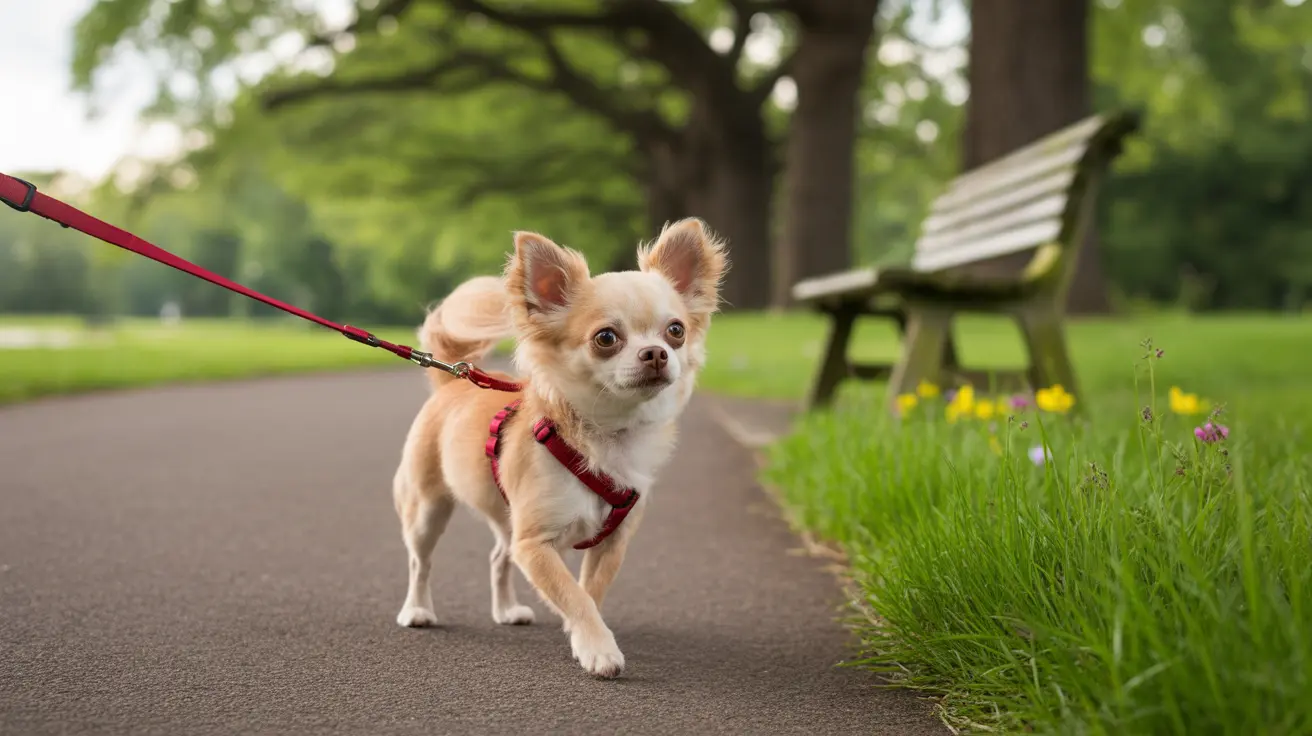Understanding Luxating Patella in Dogs
If your dog has been diagnosed with luxating patella, you're likely wondering about safe exercise options. This common orthopedic condition, where the kneecap slips out of its normal position, affects many dogs, particularly small breeds. Understanding how to maintain appropriate physical activity is crucial for your pet's wellbeing and joint health.
While the condition can be concerning, many dogs with luxating patella can continue to enjoy walks and maintain an active lifestyle with proper management and veterinary guidance. The key lies in understanding your dog's specific condition and implementing appropriate exercise strategies.
Assessing Your Dog's Exercise Needs
The severity of luxating patella is graded from I to IV, with Grade I being the mildest and Grade IV the most severe. Your dog's exercise plan should be tailored to their specific grade and symptoms:
- Grade I: Regular gentle walks usually acceptable
- Grade II: Moderate activity with careful monitoring
- Grade III: Limited, controlled exercise under veterinary guidance
- Grade IV: Minimal activity until surgical intervention
Safe Walking Guidelines
When walking a dog with luxating patella, consider these essential guidelines:
- Keep walks short and gentle
- Walk on flat, even surfaces
- Avoid sudden turns or stops
- Use a properly fitted harness
- Monitor your dog's comfort level
- Maintain a consistent pace
Benefits of Controlled Exercise
Appropriate walking can actually benefit dogs with luxating patella by:
- Maintaining muscle strength
- Supporting joint mobility
- Preventing weight gain
- Promoting mental stimulation
- Maintaining cardiovascular health
Warning Signs to Watch
Stop exercise and contact your veterinarian if you notice:
- Increased limping or lameness
- Reluctance to put weight on the affected leg
- Signs of pain or discomfort
- Swelling around the knee
- "Skipping" or abnormal gait
Alternative Exercise Options
Consider these low-impact alternatives to traditional walking:
- Swimming (under supervision)
- Gentle physical therapy exercises
- Controlled indoor activities
- Short training sessions
- Passive range of motion exercises
Frequently Asked Questions
Should I walk my dog with a luxating patella, and what type of exercise is safe?
Yes, most dogs with luxating patella can and should engage in controlled walking exercise, particularly those with Grade I or II conditions. Focus on short, gentle walks on level surfaces, avoiding high-impact activities or rough terrain.
How can controlled walking benefit a dog with mild to moderate luxating patella?
Controlled walking helps maintain muscle strength, promotes joint mobility, and prevents weight gain. It also provides mental stimulation and maintains cardiovascular health when done appropriately.
What signs should I watch for that indicate I'm over-exercising my dog with luxating patella?
Watch for increased limping, reluctance to bear weight, signs of pain, swelling around the knee, or changes in gait. If you notice any of these signs, reduce activity and consult your veterinarian.
Are there special exercises or therapies recommended to strengthen my dog's knee muscles with luxating patella?
Yes, specific exercises like controlled swimming, physical therapy exercises, and passive range of motion activities can help strengthen supporting muscles. These should be performed under professional guidance.
When is it necessary to avoid walking or seek veterinary advice for a dog with luxating patella?
Seek immediate veterinary attention if your dog shows signs of severe pain, cannot put weight on the leg, or if there's visible swelling around the knee. Also consult your vet if there's a sudden change in mobility or gait.
Conclusion
While luxating patella requires careful management, it doesn't mean your dog can't enjoy regular exercise. The key is finding the right balance between maintaining activity and preventing joint stress. Always work with your veterinarian to develop an appropriate exercise plan, and monitor your dog's response to activity levels. With proper care and attention, many dogs with luxating patella can maintain an active and healthy lifestyle.






